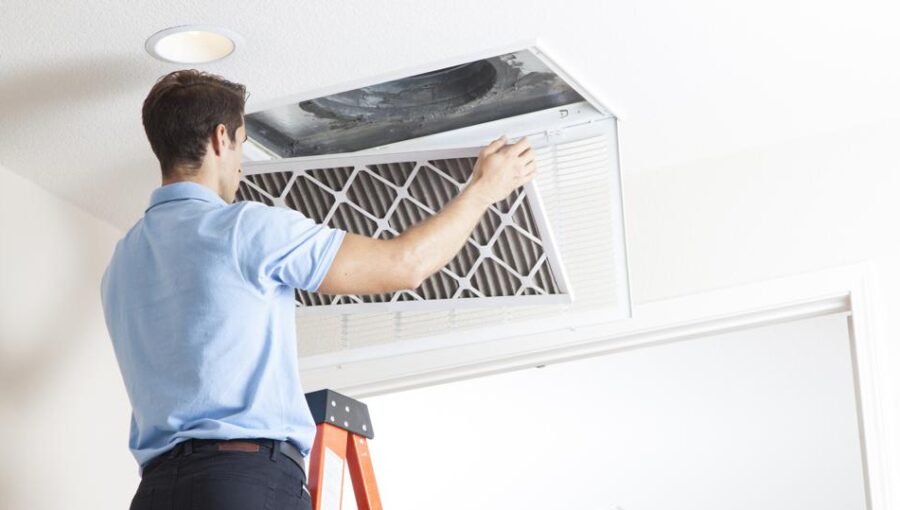Your home should be one of the safest places for your children. But if your child has asthma, there are a few extra precautions you will need to take to make sure they’re safe and secure.
The condition causes recurring episodes of wheezing, breathlessness, chest tightness, and coughing due to narrowing of the airways in response to triggers such as allergens (e.g., dust mites), cold air, viral infections (e.g., influenza), and exercise-induced bronchoconstriction (EIB). The symptoms can be managed with a combination of self-management strategies, including medication, avoidance measures, and environmental control measures; however, people with asthma should always check for any specific instructions from their physician before changing their medications.
Here are some basic guidelines that can help your home become a safer place for your children:
Remove triggers from the house
Asthma triggers vary between individuals. However, dust mites, cockroaches, and mold are the most common. Here are some ways to remove any of these potential triggers in your home.
- Removing carpeting can help reduce dust mites in the home because it’s an excellent breeding ground. Carpet pads should be vacuumed frequently and sealed up in a plastic bag when not in use.
- All pet bedding should be washed weekly. Replacing carpets with vinyl floors is another option to remove allergens found in dust.
- Cockroach traps and glue boards should be placed in the kitchen and under sinks to catch these pests.
- All moldy or musty areas in the home should be identified and cleaned up, including the basement if it is damp. Mold tends to thrive in the dark, moist areas such as bathrooms and basements. To get rid of dust and prevent mold, book an air duct cleaning service.
Turn Off Gas Appliances Before Sleeping
Household gas leaks, such as those from a faulty oven, water heater, or clothes dryer, can cause breathing difficulties. If your home uses natural gas for cooking and heating, make sure that the pilot light on any appliance is turned off at night and that you check all the connections outside of the house regularly for any signs of leaks.
This is especially important when you have an asthmatic child in the house. Even small amounts of household gas can trigger breathing difficulties, so it’s crucial to take extra care with your appliances to prevent an accidental leak that could be dangerous for your child.
Control Humidity
High humidity can also trigger asthma symptoms. If you live in a humid climate or your home has poor ventilation, consider using a dehumidifier to reduce the amount of moisture in the air. You may also want to make sure your child isn’t dressing too warmly or taking a hot shower before going to bed.
To ensure your child with asthma is safe while sleeping, keep the bedroom at a reasonable humidity level of 40 to 60 percent. Raise the temperature in the room by wearing a tee-shirt or lightweight blanket instead of turning on a heater. Dry out damp sheets and pillows more often, including changing hair products to more moisturizing ones.
Get Rid of Pet Dander
Pets can be important companions in your home. They provide unconditional love, lots of laughs, and they’re always there when you need them. But if your child has asthma, you’ll need to be more vigilant about how they affect the air quality in your home.
There are a few ways to reduce the amount of pet dander in your home. The most effective way is to remove the pet from home altogether. However, this may not be possible or practical for some people. If you can’t get rid of the pet, you can try some other methods to reduce the amount of dander in your home.
One way is to keep the pet outdoors as much as possible. Make sure they have a place to sleep that is well ventilated and away from your living areas. A garage or shed may be a good option for cats during the summer months, but make sure they have their bedding rinsed weekly.
Since dander is an allergen, it can also trigger asthma symptoms in people who don’t have pets themselves. Keeping the dust down will help with this as well. Vacuum frequently with a high-efficiency filter to reduce the number of allergens in your carpet. Consider getting a pet-free home or one with low-allergy pets, such as fish or hamsters.
Avoid Scented Products
Air fresheners, candles, room deodorizers, dryer sheets, and fabric softeners all emit chemical particles into the air that can trigger asthma symptoms. If you use these types of products at home, try to avoid using them close to your child and make sure the area is well-ventilated.
Creating a safe home environment for your child with asthma may require some effort, but it is well worth keeping them healthy and comfortable. With a few simple changes, you can make your home asthma-proof and help your child live a normal, active life.

